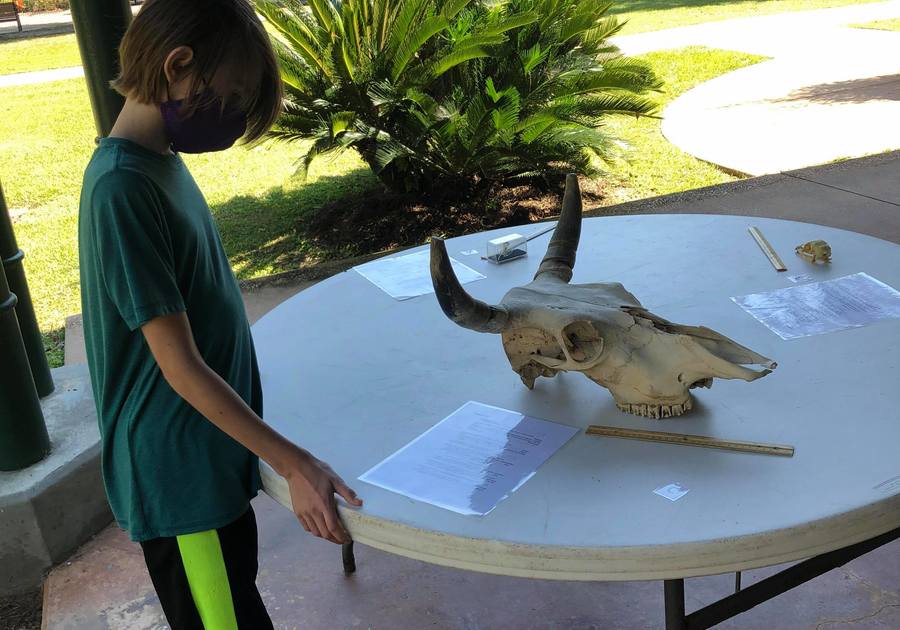We took a trip to the Baton Rouge Zoo with our homeschool group, recently, to participate in one of their programs called Skullology which is geared toward 6th grade and up. The students learned to identify and compare the structures of skulls using a dichotomous key. Whether the skull has canines, lacks them, has a beak, and the length of the skull are just a few clues from the key which help students determine what animal skull it is. The zoo also offered a program for younger students titled Native Neighbors featuring major ecosystems and animals of Louisiana which helps students gain a better understanding and appreciation for the local wildlife. And of course we spend lots of time exploring the rest of the zoo. On their website you can find several other field trip programs including Animal Senses, Moovin’ and Groovin’, Web of Life. Click here to visit the website.

One subject a lot of homeschoolers talk about is math. How to teach it, what curriculum to use, and how to help students who are struggling with it. I’ve always believed kids learn best through play and I try to incorporate a lot of hands on activities and household manipulatives for math. When my son was first learning skip counting, addition, and subtraction, I took some sidewalk chalk and we headed outside to make number lines for him to jump around on. Another favorite way to present math is by covering the length of a table/counter with butcher paper and using a sharpie to number 1-10 or 1-12 across it. Then we use buttons, pennies, chocolate chips, or whatever else we have on hand and place them under each number. We may start by placing one button (or other item) beneath each number and going down the line, adding or multiplying and using the sharpie to write the answer beneath. Then the next day/week we’d place 2 buttons under each number and the next 3 and so on. We also play Yahtzee and games like Math Dice and Sum Swamp. Lately we’ve been fixated on geometry and we play a geometry bingo game often. Janice VanCleave’s Math for Every Kid and Geometry for Every Kid books are stock full of fun math activities and experiments. Sometimes I just give my son a blank multiplication table to fill out at his own leisure. Once your child is comfortable with it, you can play games like racing to fill it out, seeing if they can beat their own time, etc. Simply Charlotte Mason also sells a mock pet shop or bookshop curriculum where students learn the math side of running a business. Fractions can be practiced while baking together and Usborne sells a fun fractions activity book. Dive is also useful for so many ways to teach math, like playing a “Find the Area” game or multiplication games. Math is probably my son’s least favorite subject but by finding creative ways to engage him, he’s learned to enjoy it.


About Annette:
I’m a homeschool mom of two, ages 11 and 5. We’ve been homeschooling from the beginning for 6 years and our preferred method is unschooling with a Charlotte Mason twist. I love homeschooling for the freedom it gives us and because I enjoy learning alongside my kids. Our favorite ways to indulge our interests are by exploring the world around us, doing experiments and activities, talking to people who are passionate about their fields, and reading well written books. I believe so much in what we do, I’ve kept it through divorce and now working full time from home. It’s my hope to continue our journey until college or whatever next step my kids choose to take.
Macaroni Kid can make it super easy for you to find your family fun all year long. Receive a local calendar of family-friendly events each Thursday evening when you SUBSCRIBE FOR FREE!
You'll be glad you did ... and so will your kids!
For even more fun, find us on Facebook, Twitter, and Instagram
You May Also Like:
 |  |  |



